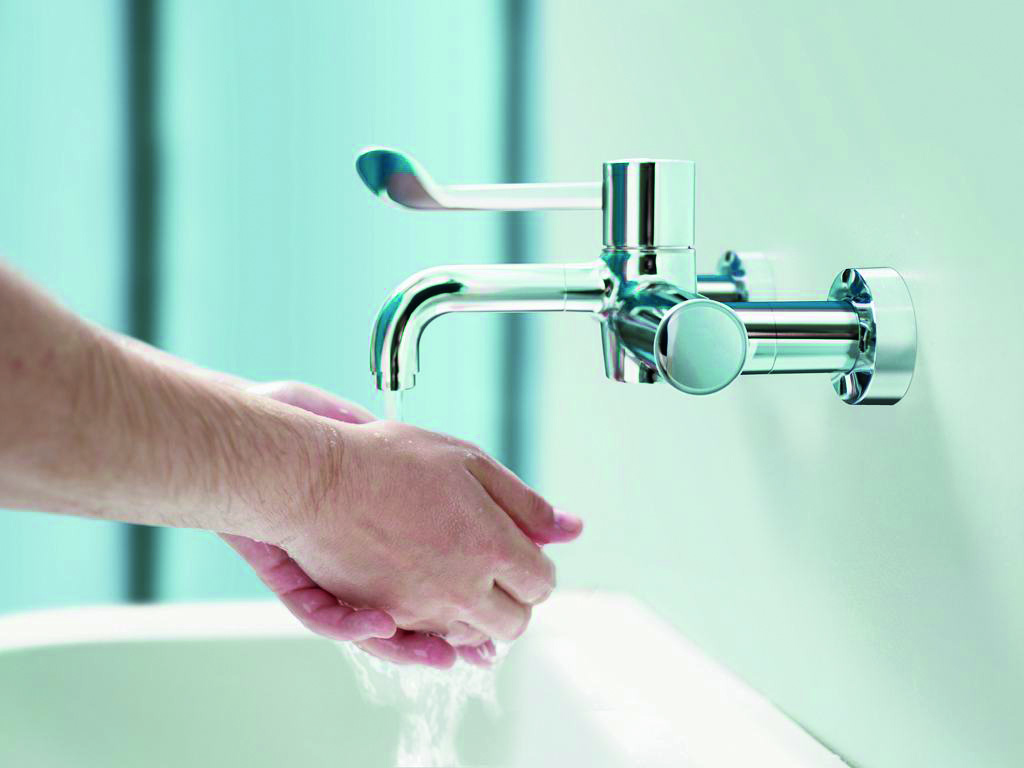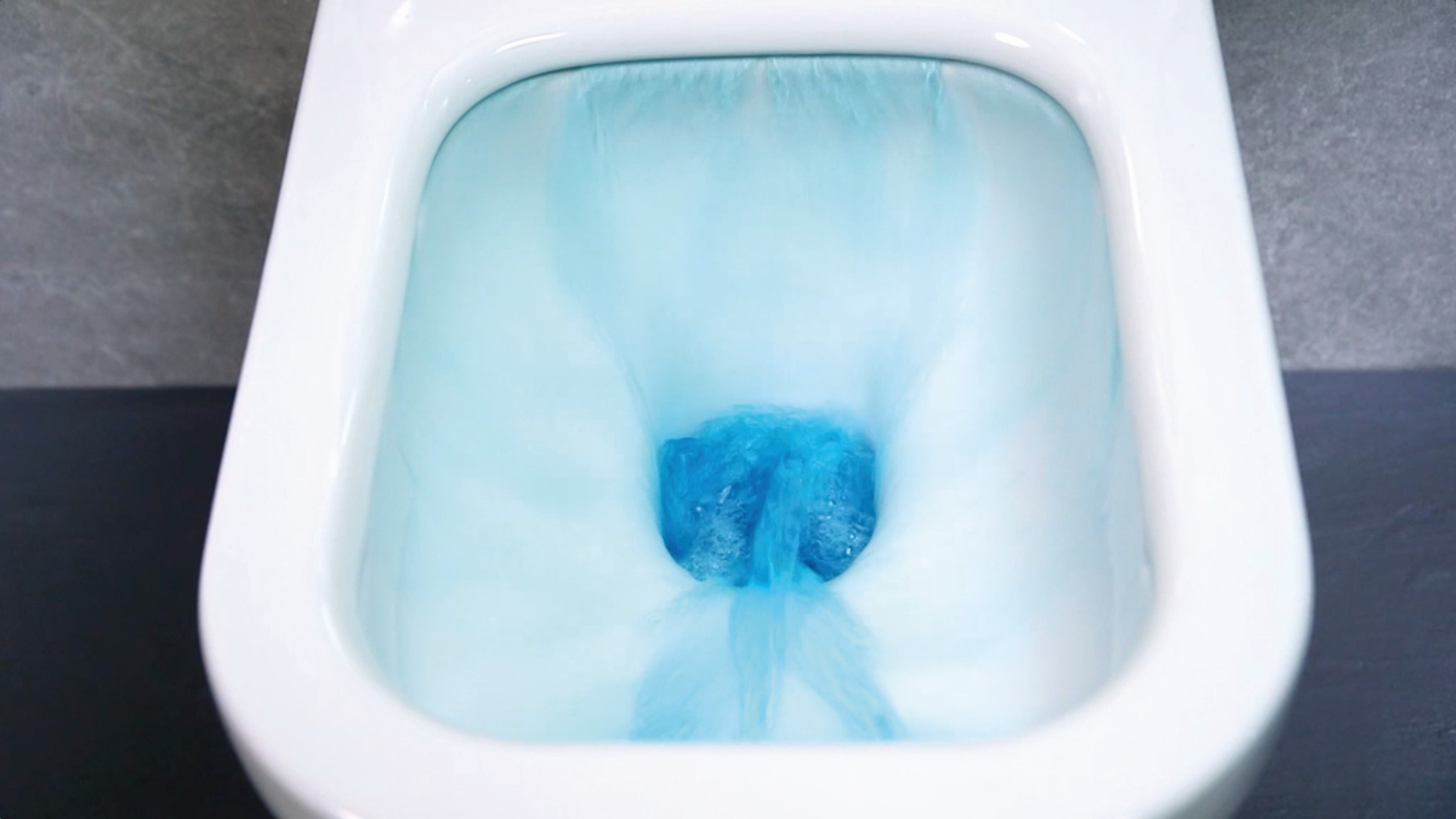Initial thoughts
Toilet facilities play an important role in public buildings. Not only must they be genuinely clean and 'safe', but must also appear hygienic to their users, as amenities that appear unsanitary reflect badly on the organisation that houses them. Building owners want their facilities to be safe, but at the same time they must look and smell pleasant to use.
The COVID-19 pandemic has led to a public washroom trend of taped off urinals and hand wash basins (HWBs) to facilitate 'social distancing'. This is not only messy, with yards of unsightly yellow tape, but is an unsuitable solution in the long term: unused outlets lead to unintended water stagnation, which facilitates bacterial colonisation and the scope for waterborne disease. This is when water hygiene risk assessments need to be taken place.
Some of the key issues in considering new and future priorities for washroom design will need to take into account social distancing, new ways buildings might be used, changes in attitudes to hand-washing as COVID-19 becomes less prevalent, and whether a typical washroom will trend towards self-contained cubicles, or super 'loos', with a toilet, basin and dryer. There is likely to be a greater priority towards touch-free sensor taps and much greater emphasis on ventilation.
As more people have been working from home, their domestic water bills have increased— but conversely, usage has reduced significantly in large public buildings. Commercialand civic organisations are likely to want to hang on to this financial saving,which will also appear more ‘sustainable’ in terms of water consumption. However, this focus on water sustainability has a downside because of installation of water saving devices may lead to undesirable water stagnation— a consequence of water saving that has become a recognised sustainabilityconundrum, such as legionella control in healthcare facilities.
Design and layout
Riskassessments for Legionella, the bacteria that causes Legionnaires’ disease,have identified stagnation in water systems associated with taps, urinals andtoilet cubicles that have been taped off, effectively creating plumbing ‘deadlegs’ that will inevitably lead to bacterial colonisation. This links to the managementof legionella in domestic water systems and legionnaires disease in hot watersystems
Mike notesthat flushing often fails to address this problem as flushing regimes often‘forget’ to assess these outlets as ‘little used water points’. Auto flushingdevices can be an option if used on every single outlet, but this wastes water.
Rotation of outlet use is often the best methodof control and can be left to users’ natural instincts to maintain socialdistance. Even in ‘normal times’ people tend to avoid each other so that eachbasin or urinal naturally gets its turn to be used.

Placing barriers that can be swapped between outlets would also be likely to interfere with this 'natural' rotation and the 'barriers' would need to be moved too frequently to be effective and preventing stagnation.
Separatingurinals with Perspex screens, as has been done in some motorway servicestations, is a possible solution. However, the screens would need very regular,very robust cleaning.
Since the COVID-19 pandemic has inevitablychanged the way we think about washroom use and the need for social distancingmay have to continue, perhaps a constructive approach to washroom design willbe to introduce much more space, both between urinals and HWBs and in the overallpathways through toilet amenities.
Behaviour
The pandemichas made younger generations more aware of cross-contamination risks and theneed for good ventilation — it seems probable that their changes in behaviourare more likely to ‘stick’ and that should be reflected in requirements forwashroom design.
Inparticular, behaviour in men’s urinals is likely to alter in favour of morehand washing. Past statistics indicate that previously, many people have notwashed their hands after using a toilet. Will this now improve, or remain thesame when a private self-contained facility is used? Units in some publictoilets issue soap, (warm) water and a drying facility, which fulfils thecriteria that states at least 20 seconds should be spent washing hands to beeffective for removing pathogenic microorganisms. However, encouragement forhand washing could also be prompted automatically — rather like ‘sat nav’voices in cars, could toilets issue electronic reminders to “now wash yourhands”?
Ventilation
Goodventilation is a hugely important factor in preventing COVID-19 transmission,but is often missed as a crucial control measure. There is considerable scopefor wider education on this.
In fact,there are Health Safety Executive (HSE) requirements for ventilation in a widerange of locations (see above). Hospitals also have specifications for airturnover in relation to infection control, but these may need to be re-examinedin the context of COVID-19 transmission.
Products
What types of products could enhance washroom design and provide solutions to the issues discussed above?
Taps
Sensor taps
Non-touch sensor taps may contain components that can be vulnerable to microbial growth. Some options, however, can be programmed to auto-flush
Sensor taps are a good choice for public washrooms as they minimise hand contact

Elbow-operated taps
In certain clinical setting, such as scrub sinks and augmented care areas, these may be a better option than sensor taps.
Foot operated taps
Another option for clinical settings in particular. For example, these have been used for temporary wash stations in the mass vaccination centre at Bath Racecourse.
Automatic flushing systems
May prevent stagnation where outlets are likely to be used, such as the end of a pipe-run
Anti-microbial surfaces
A number ofHWBs are available with anti-microbial glazes, usually containing silver.
However, these surfaces do not provide an‘instant kill’. Rather, they are inhibitory towards bacterial growth, but needsome time to work, making them more effective for low use basins. It isimportant that cleaners are educated regarding their role in maintaining waterhygiene and that they follow method statements such as those demonstrated bythe RSPH hygiene protocol for cleaning taps and sinks.
Toilets
Researchshows that the SARS-CoV-2 virus (which is the causative agent of COVID-19) ispresent in the faeces of infected individuals and has been found in wastewater. This has implications for toilet design as many toilets produce aerosolswhen flushed (see Issue 7, p 15), an effect implicated in potentially spreadingnot just the COVID-19 virus, but any other contaminating waterborne pathogens(e.g. pseudomonas waterborne bacterial infection).
Some modelsof toilets produce fewer aerosols than others, while other designs are easierto clean. New designs will need to find a balance between the two requirements.
One solutionis the toilet that can only be flushed when the lid is closed, as has alreadyappeared in some motorway service stations. In healthcare however, toilet lidsare prohibited and they can be difficult to manage for wheelchair users, whilein mental health facilities (and maybe prisons), toilet lids are eschewedbecause they could be used as an instrument for self-harm or even as a weapon.
Anothersolution to the aerosol problem could be suction or vacuum emptying as is usedin aeroplane toilets. This again might not be suitable for mental healthpatients for whom loud noises may be too challenging — however, there are newermodels of vacuum-type toilets found ‘on land’ that are much quieter.

Aquablade flush technology reduces the aerosol effect when flushed
To find outmore about washroom designs – download your free copy of our Looking Deeper 9thJournal here: https://www.idealspec.co.uk/resources/whitepapers.html